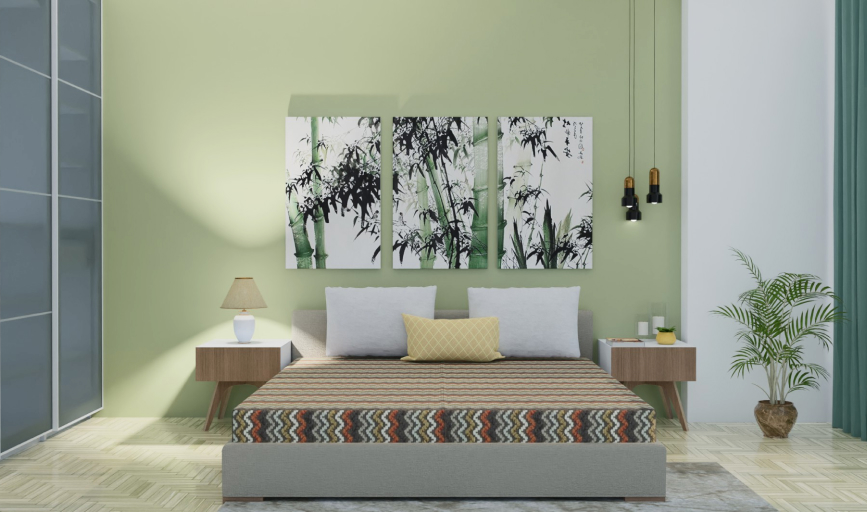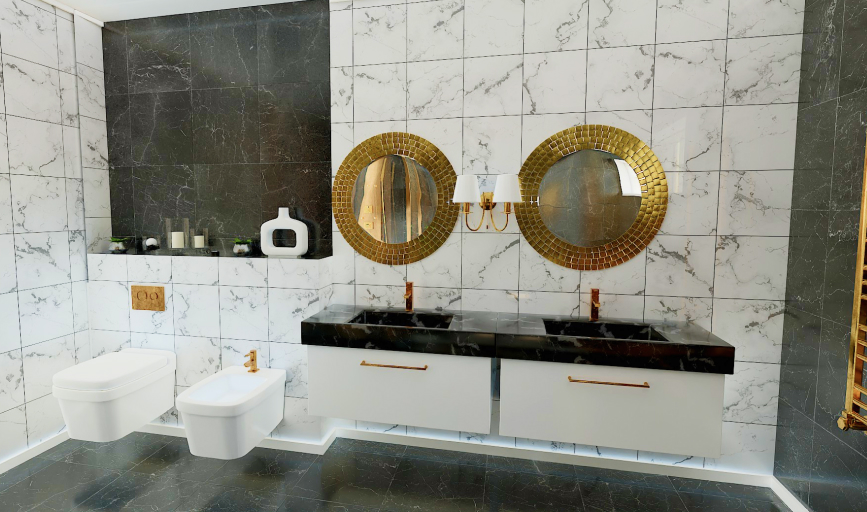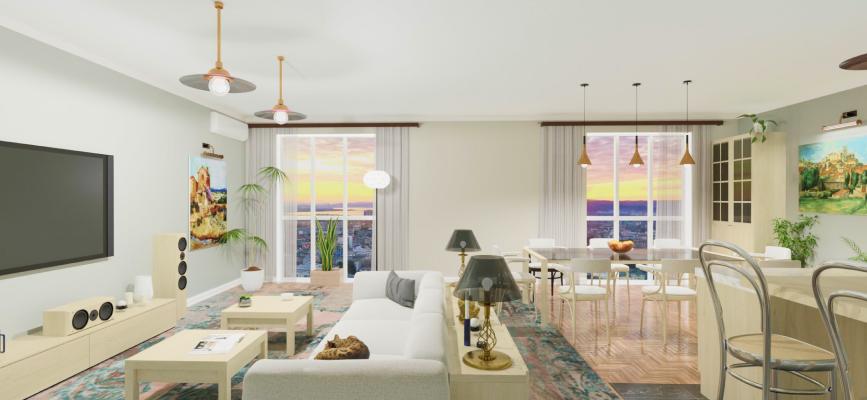
Please follow the link in the email to activate your account
The world of interior design is often perceived as subjective, ruled by taste and trend. Yet, beneath the layers of colour swatches and fabric samples lies a foundation of mathematical principles that guide truly successful spaces. Among these principles, the 60/40 Rule stands out as a simple yet powerful guideline for achieving balance, flow, and visual appeal in any room.
If you’re seeking a secret weapon to transform your space from merely functional to elegantly curated, this rule—an accessible approximation of the revered Golden Ratio—is your answer.

At its core, the 60/40 rule is a proportioning technique used to distribute visual weight in a design. It dictates that elements within a space should be divided into two contrasting parts:
Unlike the 60/30/10 rule, which is specifically for colour allocation, the 60/40 rule is far more versatile, applying to space, materials, styling, and even the combination of design styles. It ensures that your room has enough structure (the 60%) to feel grounded, while also containing enough variation (the 40%) to feel dynamic and prevent monotony.
Perhaps the most practical use of the 60/40 rule is in defining the relationship between furniture and negative space. A common mistake in room planning is either overcrowding a space or leaving it feeling sparse and uninviting. The 60/40 rule provides a blueprint for perfect furniture placement:
Practical Example: Imagine a large living room. The 60% might include the main seating arrangement (sectional sofa, armchairs, and coffee table). The 40% is the pathway leading into the room, the distance between the seating and the media console, and the open area near a window. By consciously leaving 40% of the floor clear, you naturally improve traffic flow and allow the key pieces to stand out.
While the 60/30/10 rule is the classic method for colour schemes, the 60/40 ratio works brilliantly for simpler two-tone palettes or when thinking about general colour weight:
Tip for Textures: The same logic applies to materials. Aim for 60% of your visible materials to share a commonality (e.g., smooth finishes like polished wood and stone), and use 40% for contrasting textures (e.g., woven rugs, leather, metallic accents) to add tactile depth.

The 60/40 rule is your guide to preventing "clutter creep" on shelves, consoles, and tabletops. It’s all about creating balanced vignettes where objects complement, rather than overwhelm, the surface:
When styling a surface, aim for the display items to occupy roughly 40% of the area, leaving 60% of the tabletop exposed. If you're arranging items on a decorative tray:
When hanging art or curating a gallery wall, the ratio ensures the pieces don't feel too sparse or too dense:
This proportion is critical for visually pleasing art displays, giving each piece enough room to be appreciated without blending into a chaotic mass.
The reason the 60/40 split feels so instinctively right is that it mirrors the Golden Ratio (Phi, or approximately 1.618:1). This mathematical proportion, which can be visually approximated by the 60/40 division, has been used for centuries in art, architecture, and nature because the human brain finds it inherently pleasing and harmonious.
By adopting the 60/40 mindset, you are essentially harnessing a powerful, timeless design formula that:
The beauty of the 60/40 rule lies in its flexibility. It's not a rigid measurement but a guideline for proportion. You don't need a calculator; you need to train your eye. Start by looking at your space and asking: "Does this feel like 60% foundation and 40% interest?"
By applying the 60/40 rule to your layouts, colour schemes, and accessories, you are guaranteed to create interiors that are not just beautiful, but also functionally balanced and universally appealing.
Understanding the 60/40 rule is the first step—visualizing it is the next. Before moving a single piece of furniture, use the Roomtodo 3D planner to map out your space and test different proportions.
Our intuitive tool allows you to:
Ready to design with perfect proportion?
